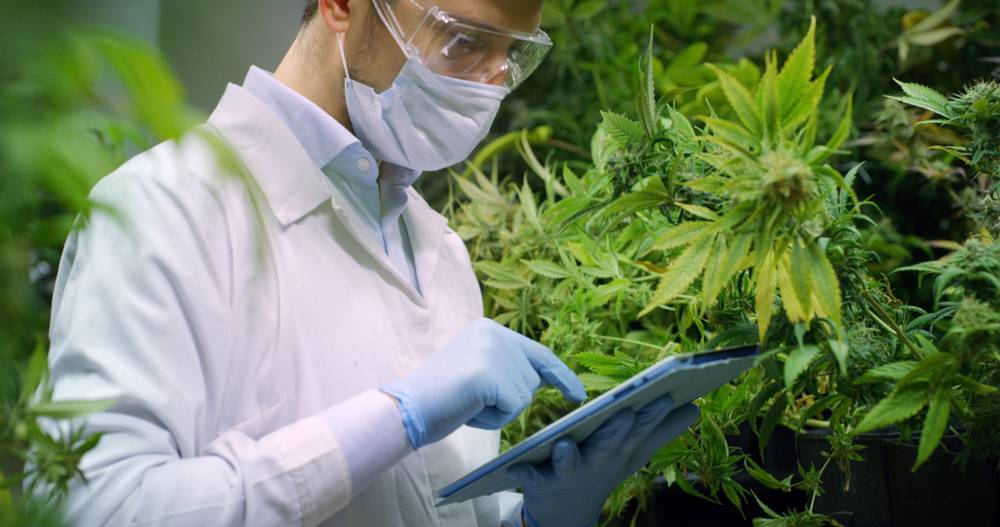
Plants depend on factors like water, heat, nutrients, and light to grow—but they also depend on humidity. Vapor Pressure Deficit (VPD) is an important part of cannabis plant growth. It’s what really drives the health and wellness of your crop.
The more dialed in your VPD is, the bigger and better your plants will be. Find out how you can get the most out of your crop by managing your VPD with Fogco misting systems.
Understanding Vapor Pressure Deficit (VPD) and Its Role in Optimizing Plant Growth
Before all else, let’s take a look at how VPD works. VPD is a way to measure how a plant responds to temperature and humidity in an environment like a greenhouse. In other words, it’s a way to describe how a plant feels through a numerical value. Managing the VPD is a critical part of your plant’s health and growth.
What Is Vapor Pressure Deficit (VPD)?
The VPD is the numerical difference between the saturating pressure of water and the actual water vapor pressure. It plays an important part in maintaining optimal transpiration rates and nutrient uptake in your crop. Transpiration is what’s known as the movement of water and nutrients through the plant’s cells.
How to Calculate Vapor Pressure Deficit
You don’t need to be a mathematician to calculate the VPD, but it does take a bit of mental lifting. To calculate, you first need to find the Saturation Vapor Pressure (SVP). The SVP refers to the maximum amount of water vapor that the air can hold at a given temperature.
Find the SVP by calculating 610.78 x e^(T / (T +237.3) x 17.2694). The constant e is equal to 2.71828. T refers to degrees in Celcius.
Once you find the SVP, calculate SVP x (1 – RH/100) to find the VPD. You can always use an online calculator to determine your environment’s RH (relative humidity) or VPD.

VPD in Plants: Cannabis and Beyond
Nailing the right temperature and humidity in your grow space is what separates a good crop from a great crop. Even though VPD is ideal for cannabis cultivation, this measurement method can be used to maintain a healthy growth space for other plants and herbs. It also helps prevent pest infestations and plant stress.
Utilizing Mist Systems To Manage VPD
Misting systems can help you adjust, maintain, and manage VPD. Systems like ours at Fogco ensure optimal fogging and humidity control for healthy, thriving plants.
A misting system disperses gallons of small water droplets that evaporate into the atmosphere, and when they do, they can regulate temperature and humidity levels.
Fogco’s Misting Systems and Humidity Controls
Systems like our flagship product, the Revolution®, are designed to provide improved evaporative cooling and humidification.
You can control the humidity using products like our humidity and temperature controllers. Just keep an eye on the humidity levels and the amount of mist being dispersed throughout your grow house.
VPD vs. Relative Humidity: Understanding the Difference
VPD and relative humidity are both needed for growing a great crop, but there’s a difference between these two humidity measurements.
Relative Humidity (RH)
Relative humidity (RH) measures the moisture content in the air at any given temperature.
Vapor Pressure Deficit (VPD)
VPD measures the difference between saturation and the moisture content in the air. The pressure of VPD is the driving force in your plant’s transpiration.
Practical Applications for Growers
VPD directly reflects the growth of cannabis at every stage of the plant’s life.
At the time of propagation, you should maintain relative humidity between 75% and 90% with a low VPD while the cutting grows roots. Vegetative plants need a low VPD to promote healthy growth with a higher relative humidity.
During the flowering stage, you’ll want to decrease relative humidity and boost the VPD. This helps the plant develop flowers, gearing it up for a robust harvest and improved yields.
Keep in mind that other plants are sensitive to VPD levels, so make sure you’re adjusting the levels based on your localized crop.
Key Takeaways
At the end of the day, your profits reflect your crop.
If you’re a grower, consider improving your crop by implementing VPD management into your cultivation process. Make VPD management even easier by incorporating a high-quality misting system into your grow house with Fogco’s industry-leading misting systems.


